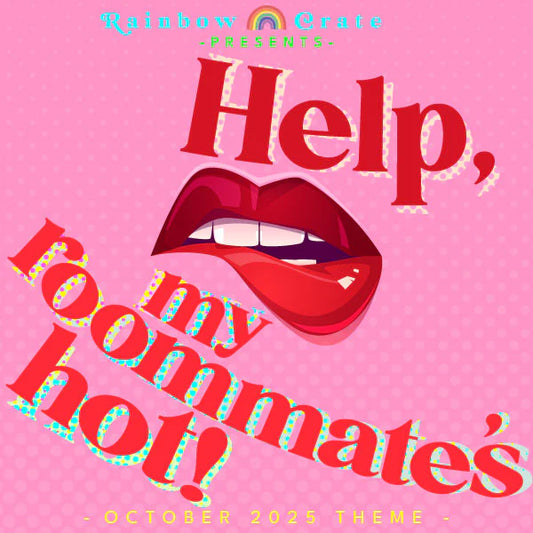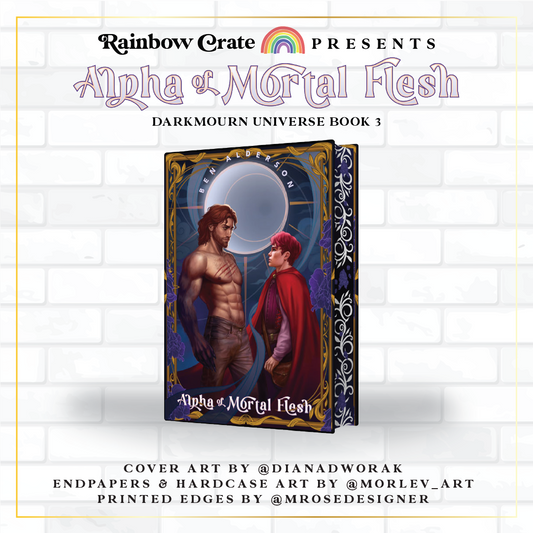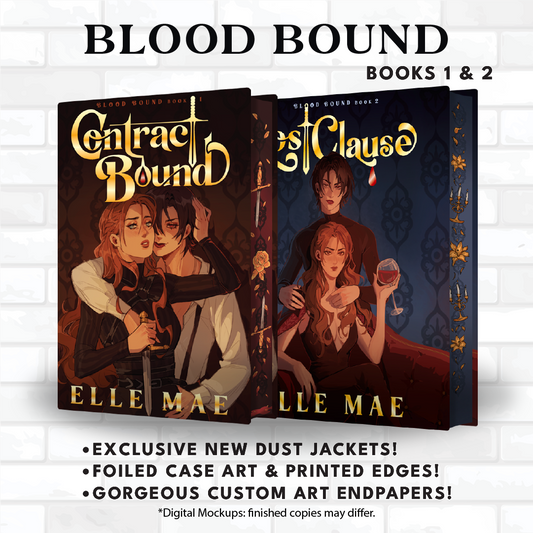Rainbow Crate x Emily Danforth on Plain Bad Heroines

Check out reviews on Goodreads
(And then grab a copy from your favorite bookstore and support queer books!)
 RC: What inspired you to write PBH?
RC: What inspired you to write PBH?
EMD: There was not a single point of inspiration for this novel. Instead, there was a constellation of inspiration, including: my love of Gothic lit and Victorian ghost stories and the very queer elements of each; my obsession with supposedly cursed horror films; my interest in Hollywood and movie making, both its magic and its challenges; the Sapphic history of so many American women’s colleges and boarding schools; New England lore and locations; metafiction; the uncanny and exploring a creeping sense of terror. I could go on, to be honest. I tend to be rather a sponge for sources of inspiration.
RC: Was there a research process when writing PBH and what did it entail if so?
EMD: My research took many forms. I spent months—too long, probably, because I was so enjoying myself—immersing myself in Gothic fiction and also turn of the 20th century ghost stories by writers like Edith Wharton and Henry James. I also read and re-read Mary MacLane’s memoir I Await the Devil’s Coming (which was originally published under the much more banal title The Story of Mary MacLane) probably half a dozen times in full and more than that when it comes to particular entries. (It’s a fairly slim book.) I also read books by historians and scholars chronicling Victorian era “romantic friendships” and Sapphic relationships at boarding schools and women’s colleges. I collected relevant ephemera and objects from the late 1800s, early 1900s as well—like Sapphic stereo-cards and school annuals and yearbooks, as well as myriad photographs. I also did some revisiting of favorite horror films that are touchstones to the novel in various ways, though I hesitate to call any of that research.
RC: What was your favorite part to write of PBH?
EMD: Writing a novel like this—one with so many intersecting storylines and multiple time periods—was a very long process, so it feels impossible for me to narrow it down to a single favorite. I did especially enjoy writing several of the scenes with Audrey, Harper, and Merritt once they’re together filming on location at Brookhants. I also especially enjoyed writing about Alex and Libbie’s early collegiate courtship and the summertime visit from their gaggle of sapphic pals.
RC: Did anything during the writing process surprise you?
EMD: So many things surprised me! How much I came to love writing about both Elaine and Caroline, for instance, despite that neither get as much story time as so many of the other characters, for obvious reasons. How captivated I was doing research into turn of the twentieth century women’s colleges and boarding schools. How many real RI locations and landmarks I was able to adapt in various ways to use in the novel. How much fun it was to collaborate with illustrator Sara Lautman, and how revelatory and inspirational her work ended up being to me as I crafted sections of the story.
RC: Who was your favorite narrator to write?
EMD: That’s an interesting question because while the books shifts POV amongst several characters, there’s really only a single narrator—THE unnamed but very opinionated narrator. I don’t specify, within the novel, just who this narrator is or what their relationship is to the story, but I do hint at it. (And I certainly wrote that voice with a particular character in mind.) Sometimes I did pull back or even mute that narrative voice to let us sink more into the character we’re following in scene (not to get too technical, but it’s basically free indirect third person, with the narrator essentially taking on elements of that character’s voice for a time). But in general, we’re in the voice and head of the primary narrator—THE narrator, who occasionally addresses us as “dear Readers” and who is crafting this tale in very particular ways.
RC: If you were to insert yourself into the book would you survive? Why or why not?
EMD: That’s a fun question and my honest answer is: I have no idea. I think, however, I’d have much more luck if I “inserted myself” into the present than into the past.
RC: What are you go to book recommendations when someone asks?
EMD: Every book doesn’t suit every reader, and that’s just fine, so I usually I might try to find out a little bit about a given person’s reading preferences before I gave them recs. Or at least I try to find out if they’re open to reading a range of genres, forms, and styles or if they tend to have a sweet spot when it comes to books they enjoy. One of my personal favorite experiences is being surprised by a book, or having maybe no expectation for what I might find in its pages at all, and then feeling like I’ve stumbled into something so wonderful and unexpected and new to me. BUT: I do think you have to let yourself be a open to that experience and for lots of reasons, sometimes readers are looking for something more familiar or known to them. What speaks to us in a book can be so intensely private, you know?
All of that having been said and given that it’s currently Halloween-week here at the end of spooky October, here are a few of my perennial faves in the Gothic/horror/thriller family:
Fingersmith: Sarah Waters
In Cold Blood: Truman Capote
Her Body and Other Parties: Carmen Maria Machado
The House Next Door: Anne Rivers Siddons
A Head Full of Ghosts: Paul Tremblay
The Changeling: Victor LaValle
The Haunting of Hill House: Shirley Jackson
The Elementals: Michael McDowell
RC: Why did you decide to write a book that switches between the past and present?
EMD: It was the only way I knew to fully tell the story I wanted to tell in Plain Bad Heroines. The past comments on the present action and vice-versa. Also, queer people have existed as long as people have existed and it was important to me to show them fully in the past, just as in the present. Plus, more simply: it was a good time. I loved getting to write scenes in both time periods and play with touchstones between them, moments of connection and reflection/refraction.
RC: Did Merritt, Audrey, and/or Harper end up together in the long-term?
EMD: I think that depends on what you mean by “the long-term.” They’re young and open to a range of experiences so, I guess make of that what you will! I think they will remain in each other’s lives but I hesitate to put a finer point on things than that.
RC: I read that Mary MacLane was a real person, who wrote a real memoir. How did you come to be inspired to write a book based around her memoir?
EMD: It’s an amazing book and it’s criminally underknown, so that’s the short answer: I was excited to give it so much page time and to help so many readers discover it, and her. The longer answer is that she was a bestselling American teenage sensation who wrote boldly about Sapphic desire (among other things) at the turn of the 20th century, so her work fit perfectly within the confines of the time period I was already interested in writing about. There really were plenty of teenage girls obsessed with her writing at that time! And they did form “Mary MacLane” clubs in her honor, just as they do in my novel. Also, a curse being potentially “embedded” within an object, like a book that passes hands, is such a familiar Gothic trope, one I love and wanted to play with in this story. And what better book than Mary’s. More than that, though, I read and re-read her first memoir (I Await the Devil’s Coming/The Story of Mary MacLane) throughout my writing process. Her words, her sensibilities from that book, they essentially haunt the pages of Plain Bad Heroines, which thrills me.)
RC: What is next for you as a writer?
EMD: I’m working on a psychological thriller, or a mystery. Both, I guess. A friend of mine calls it: grifters be grifting. It’s set in Providence and other parts of Rhode Island and is my explicitly Sapphic nod to Highsmith’s Tom Ripley novels. I’m having a lot of fun writing it. I’m also doing some screenwriting and have my sights set on the novel I’ll write after I finish the one I’m working on, which is exciting. I don’t usually have this certain a plan.
RC: If you had an opportunity to write the book again, what would you do differently?
EMD: I’m not sure how to answer that question. It took me a long time to write PBH as I wrote it, and that version of the novel is the finished version of the novel, you know? That’s the published book. I mean, because writing is always such an act of discovery for me, I’m sure lots and lots of things would change if I tried to write it again, but then I’d end up with something completely different than the book I already wrote, so—yeah. Maybe I’m overthinking this question in a way that is moving it beyond what you intended. Lol: that’s very me! I don’t have a specific thing I can name that I would set out to do differently is what I’m saying, I guess. Though I imagine, along the way, that I would indeed make many different choices—that’s part of the pleasure and difficulty of writing a novel.
RC: Is Ava supposed to be a reincarnation of Simone?
EMD: I think you might be onto something.
RC: What is the identity of the book’s narrator and what is their importance to the reading experience?
EMD: I feel like I partially answered this question above and I’m not telling the rest! You’ll have to decide for yourself who the narrator is. There are a couple of fairly pointed clues, to my mind, anyway, within the novel itself if you read closely, but I do love the suggestions/guesses I’ve heard from readers: everyone from Mary MacLane to the ghost of Eleanor Faderman. For me, the narrative voice is part of the gothic mischief of the novel, this wisecracking storyteller who knows a little too much about everything and is maddeningly curious, wants to follow every single strand of every single offshoot of this story. This is very much a novel built of many stories and it’s also a novel about storytelling—about where our stories come from, how they’re told, how whomever is telling them shapes them, etc, etc—it’s about as meta as it comes. The narrator is also a fairly direct call-back/touchstone to some of the historical horror and ghost fiction that inspired parts of Plain Bad Heroines.








